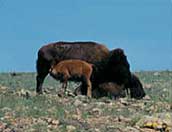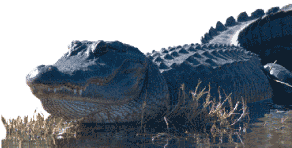The region also employs 900 dedicated professionals. They are the ones who make our conservation work possible. The Southwest’s beautiful and diverse landscape provides habitat for a wide variety of remarkable native plant and animal species. In Arizona, wildlife adapts to exist in environments ranging from scorching lowland deserts to scenic
mountain peaks. New Mexico’s breathtaking vistas intertwine with ancient cultural landscapes, accommodating many species sacred to Native Americans. From the gulf coast beaches to the plains of the panhandle, Texas boasts 13 National Wildlife Refuges and is home to a wide variety of special species including:
- whooping cranes;
 |
 |
| Southwest cactus in bloom. Credit: USFWS. |
|
the Attwater’s prairie chicken; and the Bone Cave harverstman.
Oklahoma’s expansive landscapes lay claim to species that represent the historic character of the West; prairie dogs, elk and bison still roam the plains - many making their homes on one of the state’s nine National Wildlife Refuges.
 |
 |
| Buffalo pair with calf. Credit: USFWS. |
|
National Wildlife Refuges
The national Wildlife Refuges are a unique system of lands dedicated to preserving a rich quality of life for Americans by protecting their wildlife heritage. In the Southwest Region, Refuges protect some of the most varied wildlife and spectacular landscapes found anywhere in the world. From subtropical shrub ecosystems to saguaro-studded deserts - all are filled with an unparalleled richness and abundance of life. Included among the wonders of Southwestern Refuges include the complex and beautiful Sonoran Desert in Arizona, Texas’s coastal marshes that host massive flocks of waterfowl every winter, strange creatures found only in the sinkholes of New Mexico, and Oklahoma caves filled with endangered bats.
The Southwest Region handles a variety of state grant programs, ranging from the more than half-a-century-old Wildlife and Sport Fish Restoration Programs, to relatively recent additions such as State Wildlife Grants. Approximately $80 million in federal funding is awarded each year through the nine grant programs to eligible state agencies in Arizona, New Mexico, Texas, and Oklahoma. Thanks to successful partnerships forged decades ago, the public continues to benefit from fish and wildlife conservation, management and restoration efforts in the Southwest.
Landscape Conservation Cooperatives
 |
 |
| Grasslands of the southwest. Credit: USFWS. |
|
The Southwest is also proud of our contributions made through the Landscape Conservation Cooperative (LCC) program. LCC’s are applied conservation science partnerships focused on a defined geographic area that informs on-the-ground strategic conservation efforts at landscape scales. LCC partners include DOI agencies, other federal agencies, states, tribes, non-governmental organizations, universities and others. The landscape-level conservation work of our three Southwest LCCs focus on the Great Plains LCC, the Desert LCC and the Gulf Coast Prairie LCC.
LCCs are true cooperatives that ensure partners have shared access to science, data, expertise and resources. Working
| |
 |
| |
Alligator in southwest marshes. Credit: USFWS. |
together through the LCC structure helps to limit duplication of effort, and provide scientific and technical support to inform landscape-scale conservation using adaptive management principles (known as Strategic Habitat Conservation in the USFWS). LCCs do not deliver on-the-ground conservation. That’s up to the States, the Service and other partners.
Every employee in the Southwest Region is committed to conserving our country’s living natural resources for the benefit of current and future generations of Americans. The U.S. Fish and Wildlife Service is a Bureau of the Department of Interior. The Southwest Region is one of eight U.S. Fish and Wildlife Service Regions in the United States. |